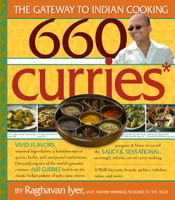Advertisement
Peppercorns
Kali Mirchi
Published 2008
I am not being overly dramatic when I say, “This is the spice that created the waves for the spice trade, paving the way for the discovery of seas, civilizations, and the shaping of history as we know it.” I admit, it is a hefty burden for this tiny, black, oily, hot, berrylike spice, but when you read about pepper once being traded for gold, you realize its position in the world of flavors. India’s indigenous plant, dating back to 4000 B.C., was Piper longum, the ancestor of the modern Piper nigrum (black pepper). Long peppers are still available in India; but their levels of the volatile oil (piperine) that generates heat are less than those of black peppercorns. The world’s top-quality black pepper is grown and processed off the coast of Malabar (now known as Kerala). Once called Malabar peppercorns, they are now more specifically labeled according to the regions that produce them: Allepey and Tellicherry (the latter being superior). As the green peppercorn berries start ripening to a red color on the vine (a creeping plant that is entwined around mango, betel nut, and palm trees), they are plucked and piled in heaps to ferment, then spread out to sun-dry; the heat turns them into the familiar black peppercorns. Their volatile oils are best when just released, and the recipes for many of the southwestern curries instruct you to do just that. Toasted, roasted, ground, coarsely cracked, or pounded, peppercorns exhibit different personalities, but their role of heat inducer is constant.


